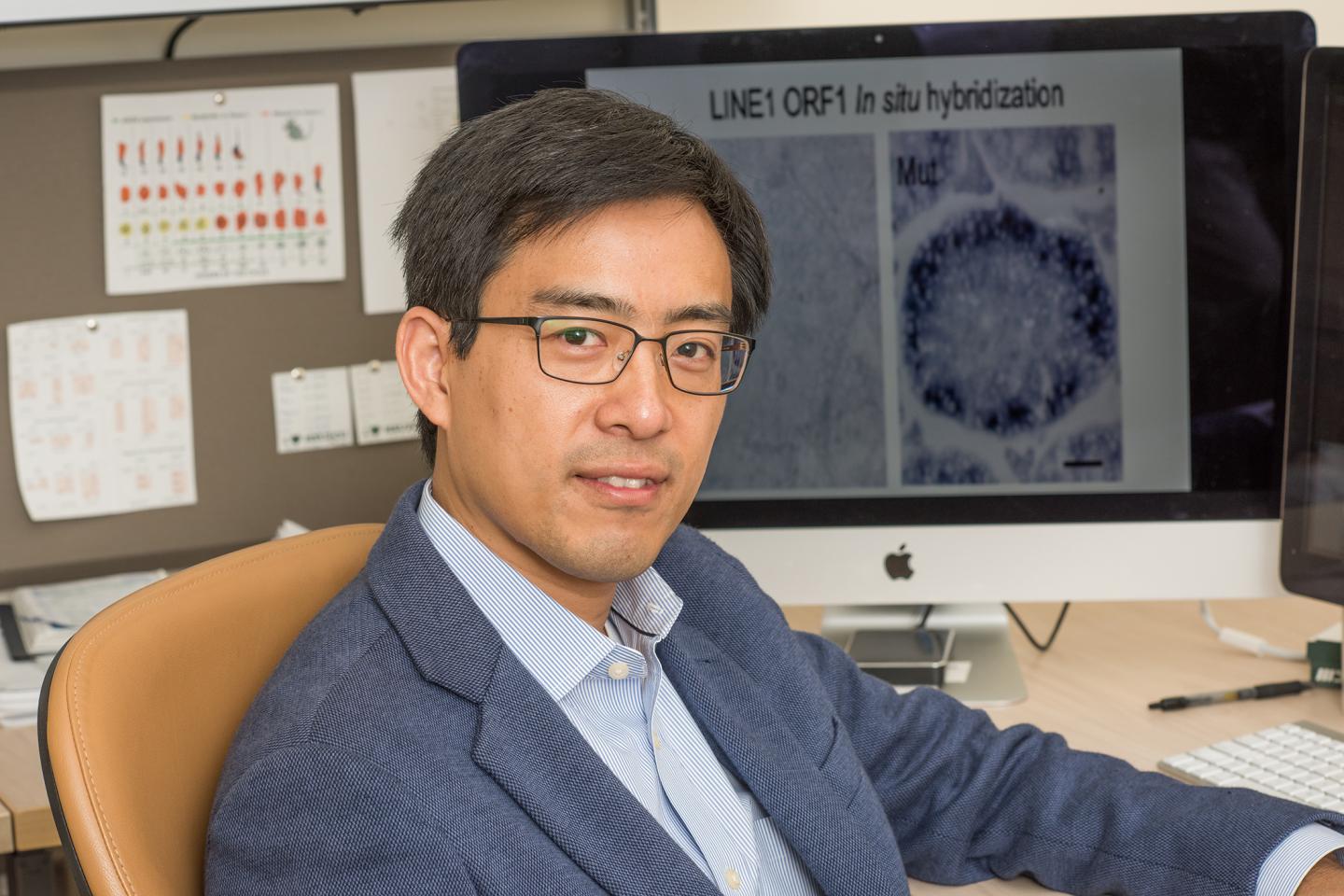
Credit: Photo by Derrick Turner
EAST LANSING, Mich. — Pinpointing the genes responsible for male fertility is the focus of two National Institutes for Health grants totaling $2.8 million.
Michigan State University scientists will use the grants to find the genes and regulatory pathways in mice that could lead to the development of new male contraception options for humans.
“We are studying genes and their encoded proteins in the piRNA pathway,” said Chen Chen, associate professor of animal science in MSU’s College of Agriculture and Natural Resources, and leader of the studies. “Using genetic and biochemical manipulation, we will have a better understanding of how small RNAs control male fertility, the genetic cause of infertility and how to potentially target the piRNA pathway for male contraception.”
Transposons, which can be described as genomic parasites, are kept in check by piRNAs, small silencing RNAs that can recognize and destroy transposons. Poor sperm quality and quantity contribute to male infertility, but the genetic cause of male infertility is unclear. Since mice are mammals and use many of the same genes for reproduction as humans, shedding light on the interactions between piRNAs and transposons could be key to solving this mystery.
One grant is focusing on a large population of piRNAs unique to mammals whose function is not to silence harmful transposons but rather to promote fertility. This piRNA population – pachytene piRNAs – is “massively” activated during the meiotic phase, the second of spermatogenesis’ three phases.
The other grant is homing in on a small RNA-based intracellular immune system that safeguards the germline genome. This immune system uses piRNAs as a guide to detect and destroy transposons. Without this immune system, transposon activity gets out of control, causing DNA damage, germ cell death and male infertility.
“On one hand, infertility is a widespread reproductive health problem. In fact, one in 10 couples are infertile, and male factors contribute to almost half of all infertility cases,” Chen said. “On the other hand, male fertility needs to be controlled to prevent unintended pregnancy. A male birth control pill is unavailable, and the identification of novel male contraception targets is strongly desired.”
###
Michigan State University has been working to advance the common good in uncommon ways for 160 years. One of the top research universities in the world, MSU focuses its vast resources on creating solutions to some of the world’s most pressing challenges, while providing life-changing opportunities to a diverse and inclusive academic community through more than 200 programs of study in 17 degree-granting colleges.
For MSU news on the Web, go to MSUToday. Follow MSU News on Twitter at twitter.com/MSUnews.
Media Contact
Layne Cameron
[email protected]
Original Source
http://go.





